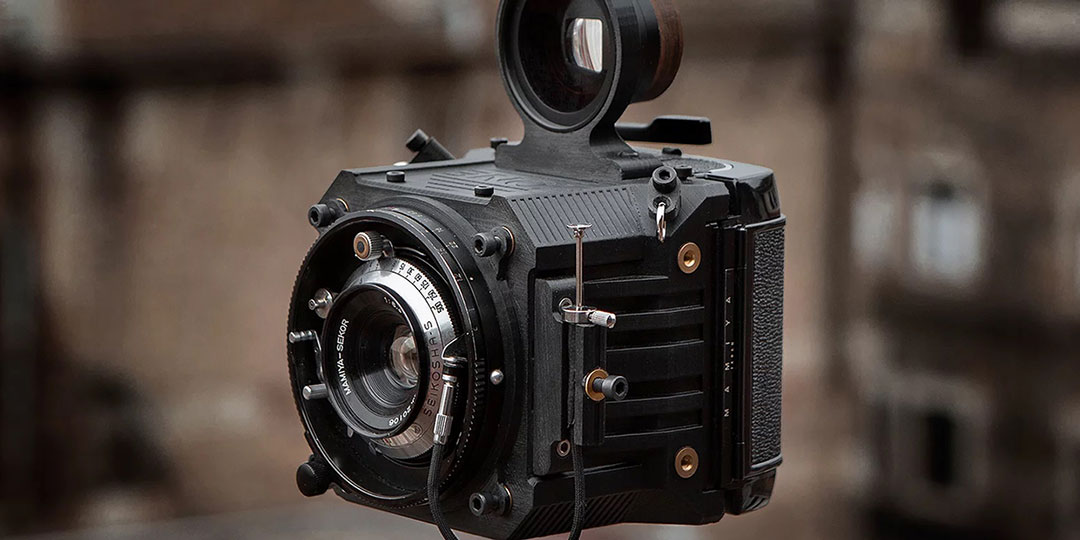Beyond Digital?
Hey, look. I’m the first to admit I don’t read WIRED or POPULAR SCIENCE magazine. Or any of the “mostly” digital websites around. I guess they were all over this, and it just went over my head. A “back to the roots, analog machine” that employs 21st century technology and materials involved in producing? And marries itself up with mid 20th century lenses and backs? OK,….although I ranted against the loss of humanity in employing Artificial Intelligence in cameras,…this is pretty damn cool. I’m all for Steam Punk, even if you have to use technology to achieve your final goal.

The Skinny
A bunch of sites have already jumped on the technical ins and outs of this 3D wunderkind, so I won’t be redundant and hash over what’s apparently “old news”. Just a little taste, in the form of a quick read on the basics. Dora Goodman site will do a much better job of revealing the intricacies of this little marvel.
Goodman Zone is a 3D printed medium format camera that was designed for those photographers who want full control, prefer zone focusing, and are looking for a new and innovative alternative to the old and expensive medium format cameras. It was built around Mamiya Press lenses and the Mamiya Pro-S magazine, but using the Goodman 3D printed helical lens adapter makes it possible to attach a wide range of large format lenses.
Due to its durability and light weight it’s great for street photographers or outdoor photographers, who carry their camera everywhere, all day long. It is available in a really cheap DIY kit, that includes all the parts pre-printed and all the necessary hardware (screws, screwdrivers, light sealing material, decoration, etc). There are even detailed tutorial videos that’ll walk you through the DIY process. Easy, peasy. However,….if you’re like me, and fall into the sub-group of people who find it awkward to assemble some stupid Amazon table, you can also choose to order it already assembled.
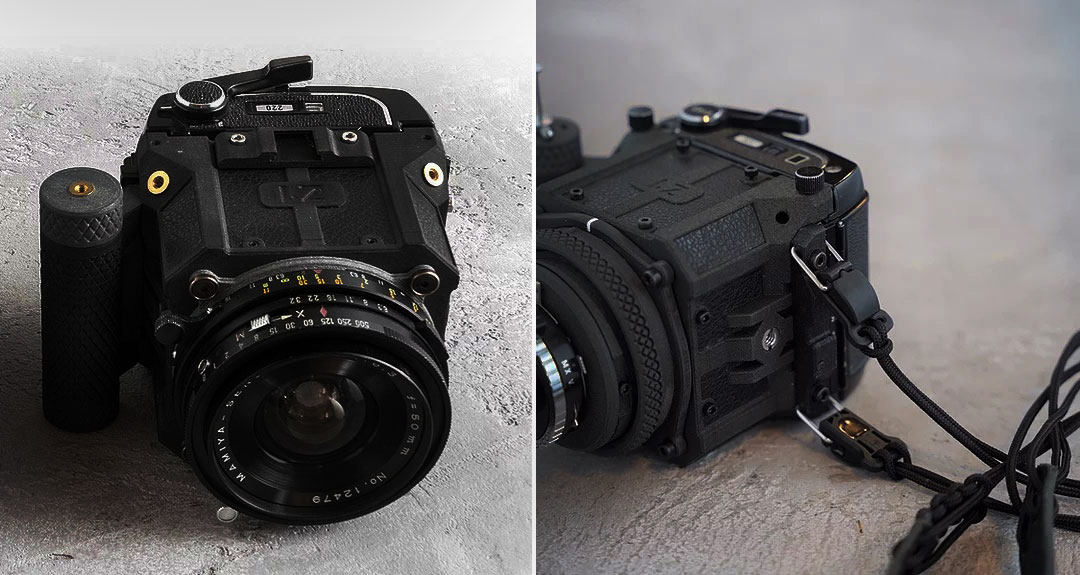
Mamiya Press Set Up
The Zone was originally built around a Mamiya setup. It works with a Mamiya RB67 Pro-S magazine and a myriad of Mamiya Press lenses. (probably any Press lens, but they missed a few in their online compatibility list) Also, those lenses are extremely sharp and pretty contrasty. (although those are “mid century” coatings, so watch for flaring) And,…CHEAP and PLENTIFUL.
Helical Lens Adapter & Ground Glass
Their accessories list is quite extensive. Especially when you consider,…they are NOT Nikon or Canon. They also developed a helical lens adapter that enables you to attach many types of large format lenses. You can order this separately from your Goodman Zone, and build a pretty customisable system. Changing between the ground glass and the back is easy and convenient, as they use magnets for mounting these parts.
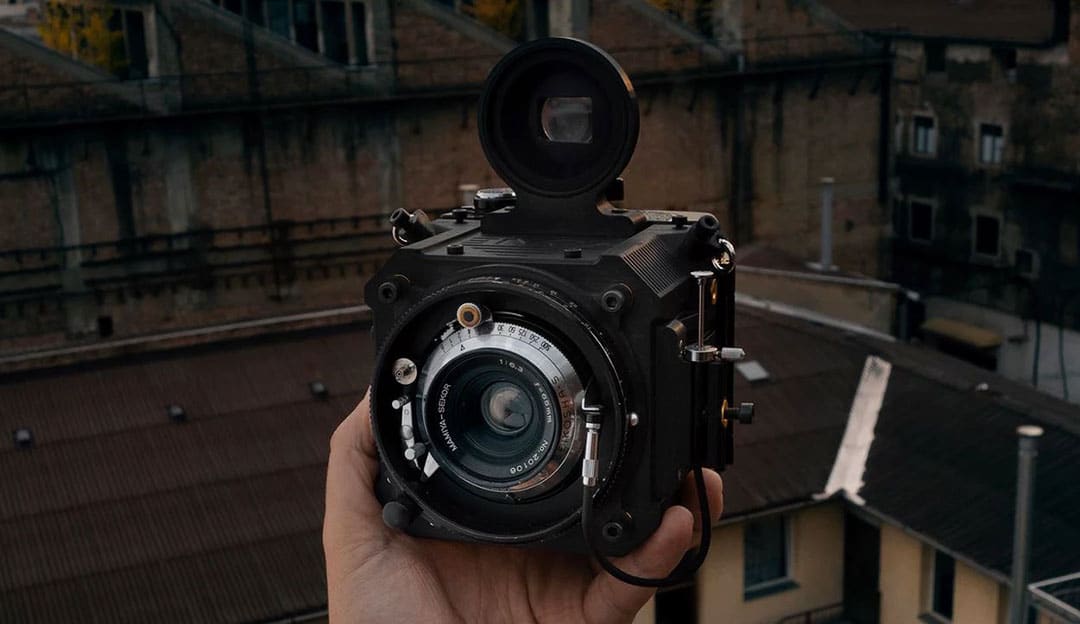
Customisable
Besides the photographic configuration being somewhat malleble, they have a bunch of add-ons and accessories, such as a grip, a shutter cable holder, a strap holder, a pinhole attachment,…,yadda, yadda, yadda. And if you just happen be more show than go, you have the option to decorate you Goodman with faux-leather, carbon or even wood to give it a “nice” alternative finish.
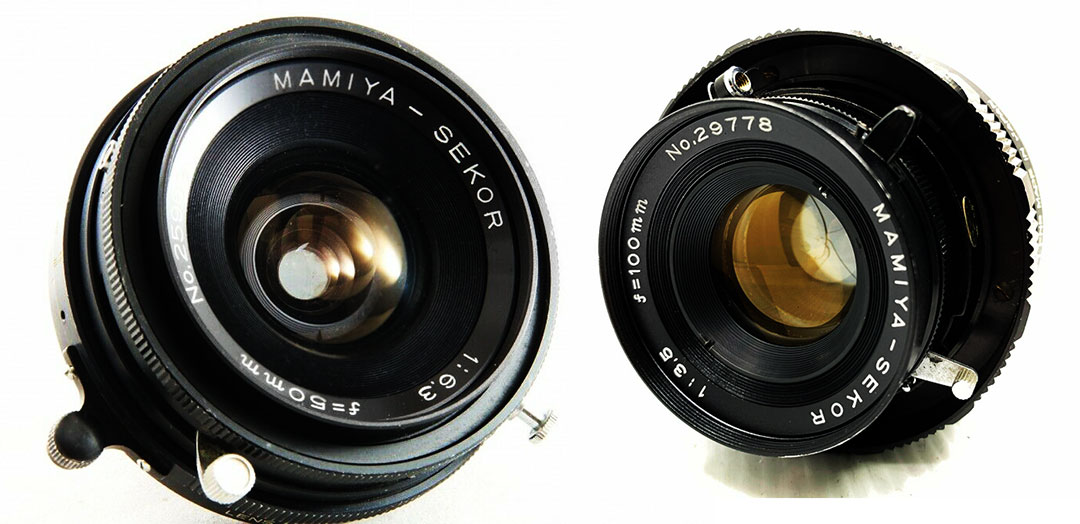
Specs:
- Zone Body: 110 x 74 x100 mm, 163 g
- Lens holder: 92 x 92 x 5 mm, 7g
- Sport viewfinder front part: 56 x 14 x 30 mm, 4 g
- Sport viewfinder back part: 56 x 11 x 22 mm, 3 g
- Flash mount: 56 x 17 x 6,7 mm, 4 g
- Grip main part: 37,7 x 37,3 x 74 mm, 33 g
- Grip top and bottom part: 29 x 29 x 24 mm, 2 x 10 g
- Pro flash mount: 56 x 47 x 15,5 mm, 10 g
- Shutter cable holder: 23 x 14,5 x 56 mm, 9 g
Mamiya Press Lenses
- 50mm f/6.3 – 8 elements in 5 groups (Biogon type)
- 65mm f/6.3 – 4 elements in 4 groups (Topogon type)
- 75mm f/5.6 – 7 elements in 4 groups (Super-Angulon type)
- 90mm f/3.5 – 4 elements in 3 groups (Tessar type)
- 100mm f/3.5 – 4 elements in 3 groups (Tessar type)
- 100mm f/2.8 – 6 elements in 4 groups (Biotar type)
- 127mm f/4.7 – 4 elements in 3 groups (Tessar type)
- 150mm f/5.6 – 4 elements in 3 groups (Tessar type)
- 250mm f/8 (not rangefinder coupled)
- 250mm f/5 – 6 elements in 4 groups (Ernostar type)
Maybe there’re more, but those are the ones listed on the Goodman site. Also, I would look up “Zone Cameras” to really understand DOF, light measurement and usage. When I said “back to the roots, analog machine”,….I wasn’t kidding. Or read the Ansel Adams book, “The Negative”, and familiarize yourself with the zone system. Although I’m probably preaching to the choir for most of you, it’s good to know the “zone philosophy”. Even if you’re a spray and pray photog. Your life will be much easier in the long run.
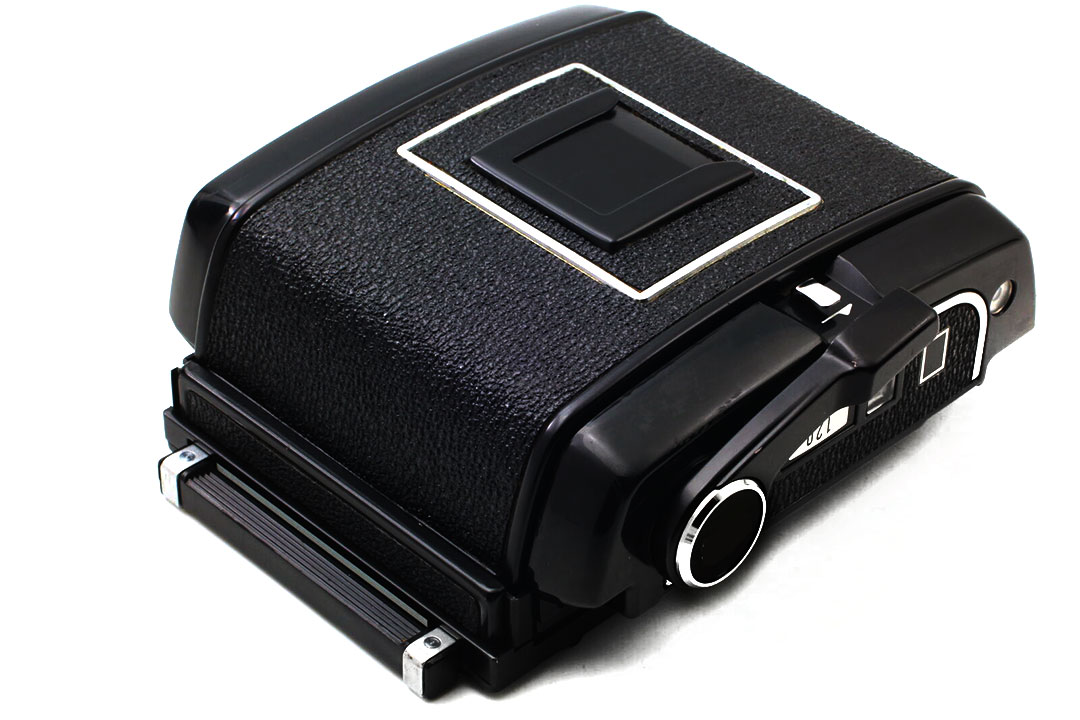
Yeah, it’s cool, and the reviews I read pretty much unanimously give it 2 thumbs up. But in this digital world we live in, I’m surprised so many people glossed over the most avante garde element about this camera: You can also download the files available on her website and build your own! Well,…assuming you have your own 3D printer or access to one. Problem for me,…I’d have to employ the services of some of my geeky friends. I’m too cool. 😁
Apparently, Dora Goodman was already a semi Tumblr/Instagram star. Since I don’t participate in any social media, I missed it. Also, from the pictures I’ve seen, she’s pretty good looking. Not at the level of my infatuation with Dora the Explorer when I was 6,…but she’s obviously hot and smart. A perfect social media combo. Alright,…now I’ll shut up before the PC police attack me again. 🙄

The Mamiya Press Lens
The 60’s Mamiya Press was a true coupled rangefinder camera with interchangeable lenses and backs. Like many view/field cameras, Graflex cameras, etc., the Press lens is a leaf shutter, which means the shutter is built into the lens instead of the camera body. They were especially useful in expanding sync (flash) speed capabilities. In fact, Mamiya, (and others), made leaf shutter lenses for their SLR cameras. (like the 645 150mm Sekor) So, actually, leaf shutter lenses have been manufactured for various cameras, not just large format. But using a leaf shutter lens was one criteria that need to be adhered to. As far as I know, I don’t think you can “print” a shutter. And while I’m sure other lenses could be used, the Mamiya Press flanges are quite short, and they are,…as I said above,…cheap and plentiful. So, that was a great choice. Heck,…they already have fully built out cameras on Ebay!
The True Acceptance Test
You can come up with any kind of design for cameras and analog peripherals. But it’s only when extraneous designers start producing a wide range of accessories and modifications for your product that you know you’ve “arrived”. Everything from more accessories to serious adaptations for other lens systems and backs. Kudos to Dora,….the “camera explorer”. 😉
Goodman Zone

